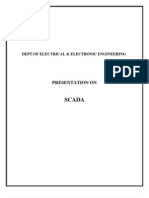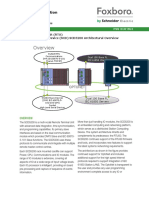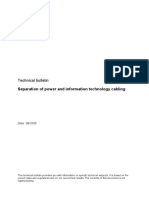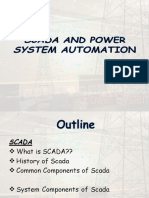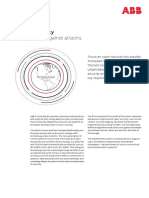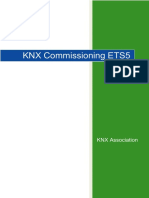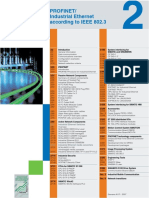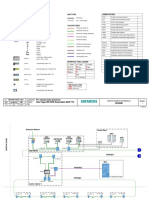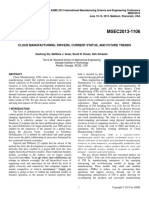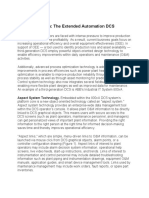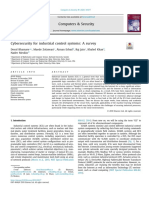0% found this document useful (0 votes)
162 views27 pagesGeneral Overview of SCADA System
A SCADA system collects measurements and status data from processes, allows for remote intervention in the process from a centralized control system, and is based on distributed inputs and outputs. It has evolved from early telemetry systems used for weather prediction and railroads to modern computer-based and wireless network-based systems. A typical SCADA system consists of a master station that communicates via dedicated circuits with remote terminal units to monitor and control physical plants and equipment. Major SCADA components include the master terminal unit, remote terminal units/programmable logic controllers, intelligent electronic devices, human-machine interfaces, and various sensors and actuators.
Uploaded by
Ankushkumar MaliCopyright
© © All Rights Reserved
We take content rights seriously. If you suspect this is your content, claim it here.
Available Formats
Download as PDF, TXT or read online on Scribd
0% found this document useful (0 votes)
162 views27 pagesGeneral Overview of SCADA System
A SCADA system collects measurements and status data from processes, allows for remote intervention in the process from a centralized control system, and is based on distributed inputs and outputs. It has evolved from early telemetry systems used for weather prediction and railroads to modern computer-based and wireless network-based systems. A typical SCADA system consists of a master station that communicates via dedicated circuits with remote terminal units to monitor and control physical plants and equipment. Major SCADA components include the master terminal unit, remote terminal units/programmable logic controllers, intelligent electronic devices, human-machine interfaces, and various sensors and actuators.
Uploaded by
Ankushkumar MaliCopyright
© © All Rights Reserved
We take content rights seriously. If you suspect this is your content, claim it here.
Available Formats
Download as PDF, TXT or read online on Scribd
/ 27
